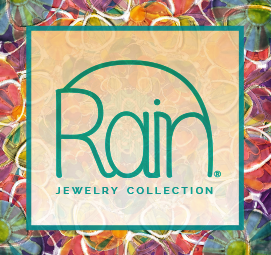Tips for Sourcing & Selling Retail Jewelry
Are you looking to start your own jewelry business but don't know where to begin? With the right approach, sourcing and selling wholesale jewelry can be a profitable venture. In this blog, we will guide you through the basics of understanding the jewelry business, getting started with your own business, sourcing quality jewelry, setting up your online store, and effective marketing strategies. We will also cover pricing strategies that work and how to use social media for promotion. From identifying your niche to crafting a business plan, and selecting the right supplier to negotiating prices and terms, this blog has got you covered!
Understanding Wholesale Jewelry Business
To be successful in the retail business, it is essential to gain knowledge about the industry and its trends. Understanding the importance of sourcing quality products is crucial for your business's reputation and customer satisfaction. Researching market trends will help you stay competitive and identify opportunities. Crafting a solid business plan will serve as a guide for your venture, ensuring you stay on track and achieve your goals. Identifying potential customers and targeting your audience effectively will help you tailor your marketing efforts and increase sales. By understanding these key aspects, you can build a thriving retail jewelry business.
What is Wholesale Jewelry?
Wholesale jewelry involves purchasing jewelry in bulk at discounted prices, allowing you to sell it at a higher profit margin. It includes various types like fine jewelry, fashion jewelry, and costume jewelry. Sourcing wholesale jewelry is a great way to start an online business as suppliers offer a wide range of products.
Importance of Sourcing Quality Jewelry
Sourcing quality jewelry plays a vital role in ensuring customer satisfaction and fostering repeat business. As a wholesaler, offering high-quality jewelry not only enhances your reputation but also attracts potential customers, establishing a loyal customer base. Additionally, providing excellent customer service and promptly addressing any quality issues that may arise is essential in maintaining trust and loyalty with your customers. By prioritizing the sourcing of quality jewelry, you can create a strong foundation for your wholesale business.
Getting Started with Your Retail Jewelry Business
To get started with your retail jewelry business, it's essential to identify a specific niche that targets a specific customer segment. Research market trends to understand consumer preferences and demands, which will help you tailor your offerings accordingly. Craft a comprehensive business plan outlining your goals and strategies for success. Set up an online store and establish a strong online presence through social media and a blog to reach a wider audience. Finally, source your products from reliable suppliers offering competitive pricing, ensuring you provide high-quality products to your customers. By following these steps, you'll be well on your way to building a thriving retail business.
Identifying Your Jewelry Niche
When starting your retail business, it's important to identify your niche. Determine the specific type of jewelry you want to specialize in, whether it's necklaces, handmade jewelry, or something else. Consider your target audience and their preferences when selecting your jewelry niche. Research competitors in your chosen niche to identify gaps and opportunities. Focusing on a specific type of jewelry will allow you to establish yourself as an expert in that niche. Tailor your marketing strategies to attract customers interested in your specific jewelry niche. By identifying your jewelry niche, you can effectively position yourself in the market and cater to the needs of your target audience.
Researching Market Trends
To stay ahead in the jewelry industry, it is crucial to stay updated with the latest trends. By using online tools and resources, you can analyze market trends and consumer behavior to align your offerings with customer preferences. Attending trade shows and jewelry exhibitions provides valuable insights into emerging trends and helps you stay ahead of the competition. Monitoring popular social media platforms allows you to identify jewelry trends favored by influencers, which can guide your product selection. Additionally, researching keywords using search engines can optimize your online presence and help potential customers find your jewelry business easily. Stay proactive and adapt to changing trends to appeal to your target audience.
Crafting Your Business Plan
Crafting Your Business Plan is an essential step in building a successful retail business. In your business plan, outline your goals, target market, and marketing strategies to create a roadmap for success. Determine your pricing strategy by considering costs and desired profit margins. A detailed financial plan that includes budgeting for inventory and marketing expenses will help you stay on track financially. Don't forget to anticipate potential challenges and risks that may arise in the retail business. Lastly, continuously evaluate and update your business plan to adapt to market changes and ensure long-term success.
Effective Pricing Strategies for Jewelry
Setting the right prices for your jewelry is crucial for the success of your business. To ensure competitive pricing, it's important to understand the market prices for different types of jewelry. Take into account factors such as material costs, labor, and overhead expenses when setting your prices. Offering competitive rates will help attract potential customers and set you apart from your competitors. Consider creating pricing tiers based on the quality and exclusivity of your jewelry to cater to different customer segments. Additionally, regularly reviewing and adjusting your pricing strategy based on market trends will help you stay competitive and maximize your profits. By implementing these effective pricing strategies, you can drive sales and grow your retail business.
Understanding Market Prices
To effectively sell jewelry, it's crucial to understand market prices. Conduct thorough market research to gain insights into the average prices for wholesale jewelry. Analyze pricing trends to identify opportunities for competitive pricing that can attract potential customers. Stay updated with industry news and market reports to get valuable pricing insights. When determining your prices, consider the cost of materials, craftsmanship, and market demand. It's also essential to benchmark your prices against competitors to ensure competitiveness in the market. By understanding market prices, you can strategically price your jewelry and position your business for success in the retail industry.
Factors Influencing Jewelry Pricing
The price of jewelry can be influenced by various factors. Precious metals and gemstones play a significant role in determining the cost of jewelry. The labor costs involved in design and craftsmanship can also impact the pricing. Additionally, the brand reputation and exclusivity of the jewelry can affect its perceived value. Market demand and supply dynamics are other important factors to consider when pricing jewelry. Customization options and unique features may justify higher prices as well. By understanding these factors, jewelry sellers can strategically price their products to appeal to their target market and maximize profits.
Marketing Your Retail Jewelry
Effectively displaying your jewelry in-store is essential for attracting potential customers. Utilizing professional product photography can elevate the presentation, emphasizing the quality and unique features of your pieces. Leverage popular social media platforms like Instagram and Facebook to connect with your target audience. Craft engaging posts and incorporate relevant hashtags to boost visibility and generate interest in your jewelry collection.
Additionally, consider creating informative blog posts or producing videos to share valuable insights about your jewelry and the industry, establishing your expertise and drawing in both customers and fellow jewelry retailers. Participating in trade shows or local jewelry exhibitions provides an invaluable opportunity to engage with potential customers face-to-face and showcase your jewelry up close. Collaborating with influencers or local jewelry enthusiasts can further enhance brand promotion and expand your reach within the retail community.
Showcasing Your Products Effectively
When it comes to showcasing your jewelry effectively, there are several key strategies to keep in mind. First and foremost, using high-quality images that capture the details and beauty of your jewelry is essential. These images will serve as the first impression for potential customers, so they need to be visually appealing and showcase the unique features of your products. Additionally, writing compelling product descriptions that highlight the unique features and benefits of your jewelry can help attract and engage potential buyers. A visually appealing website layout with easy navigation is also crucial for creating a positive user experience. Providing clear product specifications, such as size, weight, and materials used, will give customers accurate information to make informed purchasing decisions. Lastly, incorporating customer reviews and testimonials can help build trust and credibility, as well as provide social proof of the quality of your products. By implementing these strategies, you can effectively showcase your jewelry and increase your chances of making sales.
Using Social Media for Promotion
To effectively promote your retail business, it is crucial to develop a social media strategy that engages with your target audience. Regularly posting engaging content related to jewelry, fashion trends, and industry news will keep your followers interested and informed. Utilizing hashtags and relevant keywords will increase the visibility and reach of your social media posts, allowing more potential customers to discover your products. Collaborating with influencers or jewelry enthusiasts can also be a great way to showcase your jewelry and attract a wider audience. Additionally, engaging with your followers through comments, likes, and shares will help build a loyal community around your brand. By utilizing social media platforms effectively, you can significantly boost your online presence and increase your jewelry sales.
Consistent Posting and Engagement Strategies
To effectively promote your retail business, it's crucial to maintain consistent posting and engagement strategies. Stay active on social media platforms like Facebook, Instagram, and Twitter to connect with your target audience and showcase your products. Regularly update your blog with informative and engaging posts that provide valuable insights about the jewelry industry and trends. Participating in trade shows is also a great way to interact with potential customers and showcase your jewelry collection. Utilize effective marketing strategies to drive traffic to your online store, such as targeted advertising campaigns and search engine optimization techniques. By consistently posting and engaging with your audience, you can establish a strong online presence and drive more sales for your retail business.
Importance of Regular Posting
Frequent updates within your brick-and-mortar establishment are crucial for maintaining a strong connection with your customer base and positioning yourself as a trusted figure in the jewelry industry. By consistently introducing new pieces to your physical display, you can draw in potential buyers and keep their interest piqued. This steady stream of updates not only cultivates trust and loyalty among your patrons but also provides insights into their preferences and desires.
Active engagement through conversations, appreciation, and recommendations is key to nurturing a dedicated community. By adhering to a consistent update schedule, you can effectively expand and enhance your retail business, ultimately driving sales within your physical store.
How can engaging content boost your sales?
Engaging content is key to boosting sales in jewelry. It captures the attention of potential customers, while high-quality images and compelling product descriptions entice them to make a purchase. Building credibility with engaging blog posts and articles, and encouraging customer participation through interactive content, can also increase sales. Sharing customer testimonials and success stories creates social proof.
Conclusion
In conclusion, starting a successful retail business requires careful planning, sourcing quality products, setting up an online store, and implementing effective marketing strategies. It's important to understand the retail industry and identify your niche to stand out from the competition. Researching market trends and crafting a solid business plan will set you up for success. When sourcing your products, choose reputable suppliers and evaluate the quality of the products. Negotiating prices and terms will help maximize your profit margins. Setting up a user-friendly e-commerce store and using social media for promotion are crucial steps in attracting customers. Consistent posting and engaging content will help build a loyal customer base. By following these tips, you can thrive in the retail market and achieve profitable results.


